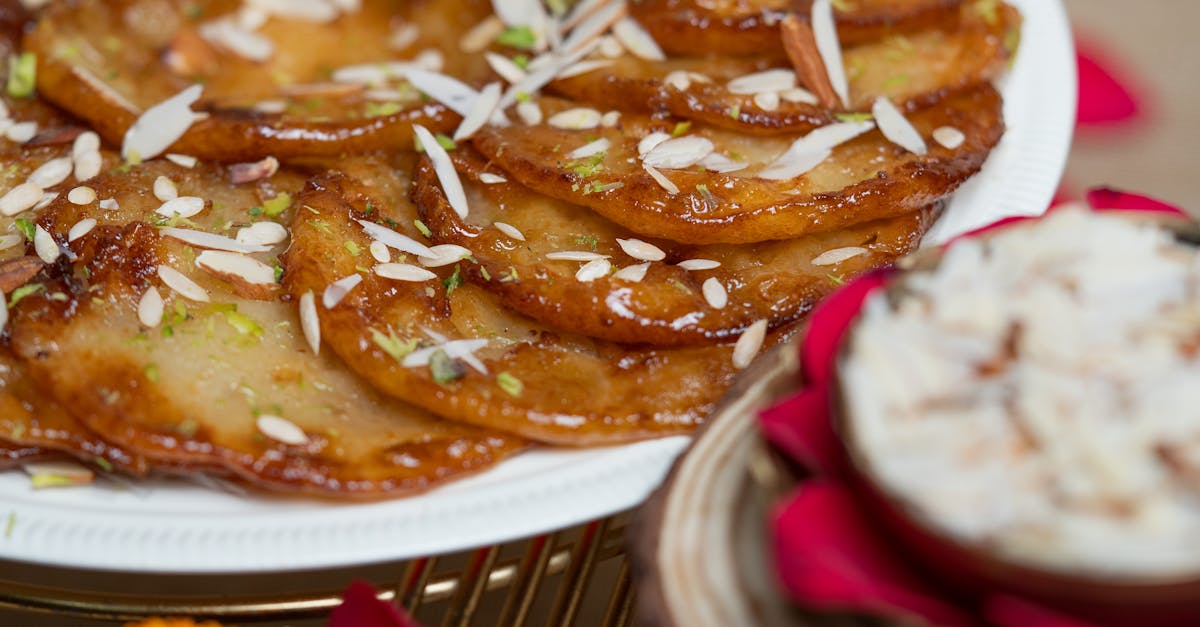Gulab Jamun is a beloved Indian dessert that captures the hearts and taste buds of many. With its soft, syrup-soaked balls, it’s a treat perfect for any occasion. Making Gulab Jamun at home might seem daunting, but with the right ingredients and steps, you can create this delightful dessert in no time. In this guide, we will walk you through the essential ingredients and steps to make Gulab Jamun, ensuring your sweet endeavor is a success.
| Ingredients | Quantity |
|---|---|
| Milk Powder | 2 cups |
| All-Purpose Flour | 1/4 cup |
| Ghee or Oil | For frying |
| Baking Soda | 1/2 tsp |
| Milk | 1/2 cup (or as needed) |
| Sugar | 2 cups |
| Water | 1 cup |
| Cardamom Powder | 1 tsp |
| Rose Water | 1 tsp |
| Pistachios (chopped) | For garnishing |
Milk Powder
Milk powder is the main ingredient in Gulab Jamun, providing the rich flavor and texture. It’s essential to use full-fat milk powder to ensure that the dough is soft and pliable. You can find milk powder in any grocery store or online.
All-Purpose Flour
All-purpose flour acts as a binding agent that helps give structure to the Gulab Jamun. It is crucial to use the right amount to ensure the balls hold their shape during frying. A little goes a long way, so measuring accurately is important.
Ghee or Oil
Ghee or oil is necessary for frying the Gulab Jamun. Ghee will impart a richer flavor, while oil is a suitable alternative for those who prefer it. Ensure the oil is heated to the right temperature for frying to achieve the perfect golden-brown color.
Baking Soda
Baking soda is used as a leavening agent, helping the Gulab Jamun to puff up while frying. This results in a soft and fluffy texture that is characteristic of well-made Gulab Jamun.
Milk
Milk is used to form the dough for the Gulab Jamun. The quantity required can vary, so it is best to add it gradually until the dough reaches the right consistency. The dough should be soft but not sticky.
Sugar
Sugar is the key ingredient in the syrup that soaks into the Gulab Jamun, giving it sweetness. The syrup is made with sugar and water, and it is flavored with cardamom and rose water for an aromatic finish.
Water
Water is essential for making the sugar syrup. It is combined with sugar and boiled until it reaches a one-string consistency. This syrup is what makes the Gulab Jamun juicy and flavorful.
Cardamom Powder
Cardamom powder is a fragrant spice that adds a distinctive flavor to the Gulab Jamun. It is often used in Indian desserts, making it a perfect addition to this sweet treat.
Rose Water
Rose water is another aromatic ingredient that enhances the flavor of the syrup. It gives the Gulab Jamun a delicate floral note, making it even more appealing to the senses.
Pistachios (chopped)
Pistachios are used as a garnish for Gulab Jamun, adding a crunchy texture and a pop of color. They not only enhance the presentation but also add a nutty flavor that complements the sweetness of the dessert.

FAQ
Can I use fresh milk instead of milk powder?
Yes, while milk powder is traditional, you can make Gulab Jamun with fresh milk by using khoya (mawa), which is evaporated milk. This will give a rich flavor but requires more precise handling to get the right dough consistency.
How do I know if the oil is hot enough for frying?
To check if the oil is at the right temperature, drop a small piece of dough into the oil. If it rises to the surface and sizzles, the oil is ready. If it browns too quickly, the oil is too hot.
Can I store Gulab Jamun?
Yes, Gulab Jamun can be stored in the refrigerator for up to a week. Make sure to keep them in the syrup to maintain their moisture. You can also freeze them for a longer shelf life.
What is the best way to serve Gulab Jamun?
Gulab Jamun is best served warm or at room temperature, soaked in syrup. You can also pair it with vanilla ice cream for a delightful contrast of flavors.
Can I make Gulab Jamun ahead of time?
Absolutely! You can prepare the dough and shape the balls in advance. Just fry and soak them in syrup a few hours before serving to ensure they are fresh and delicious.
For more detailed recipes and cooking tips, you can refer to [Nutritional Guidelines by the USDA](https://www.usda.gov/) and [Food Safety Information from the FDA](https://www.fda.gov/). Happy cooking!
